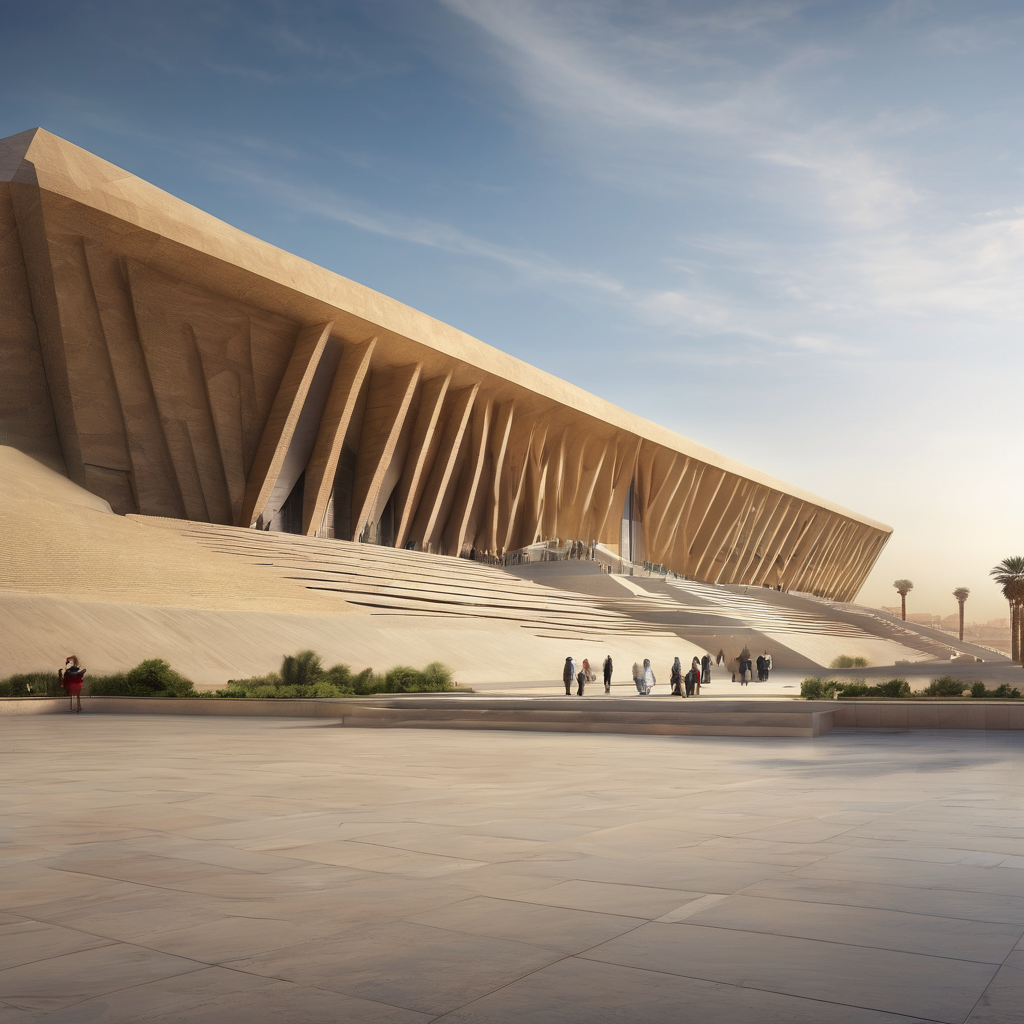Prime ministers, presidents, and members of royalty gathered in Cairo on Saturday to celebrate the grand inauguration of the Grand Egyptian Museum (GEM), a monumental establishment located near the Pyramids. This momentous event culminates two decades of construction, a journey fraught with challenges including the Arab Spring uprisings, pandemics, and regional conflicts.
During a press conference, Egyptian Prime Minister Mostafa Madbouly expressed the significance of the museum, declaring it a “gift from Egypt to the whole world,” highlighting the rich history that spans over 7,000 years. The ceremony saw attendees, including President Abdel Fattah al-Sisi, engaging with a vibrant display of cultural performances projected on an enormous screen in front of the museum, showcasing Egypt’s most iconic cultural sites.
The inaugural festivities featured Egyptian pop stars and a live international orchestra, joined by dancers adorned in pharaonic-style costumes, all under a mesmerizing light show that included fireworks and moving hieroglyphics. President Sisi remarked that the opening of GEM marks a new chapter in the storied history of Egypt, emphasizing the museum’s role in preserving and exhibiting the nation’s ancient heritage.
The museum houses a vast collection of more than 100,000 artifacts, prominently including treasures from the tomb of the young pharaoh Tutankhamun—an exhibit that has drawn global anticipation since its opening was announced. Notable artifacts feature Tutankhamun’s richly adorned burial mask, golden throne, and sarcophagus, further complemented by a colossal statue of Ramses II that now graces the grand entry hall.
In a notable departure from the neoclassical Egyptian Museum, which has served as a cultural repository for over a century, GEM boasts a modern architectural design that resonates with the iconic Pyramids, enhancing the visitor experience in a contemporary setting. This new facility comes as a welcome change following the hardships faced by the old museum, which struggled with security issues and poor preservation practices during turbulent times.
The Egyptian government aims for the GEM to shift perceptions about the country’s ability to care for its historical treasures, making a case for the return of Egyptian artifacts held in international museums. A recent commentary in the state-run Al-Ahram Weekly illustrates the museum as more than just a physical structure; it embodies a philosophy and cultural legacy that positions Egypt authentically in the global treasure trove of heritage.
Having been financed largely by Japanese development loans at a cost of over $1 billion, the museum’s comprehensive design covers approximately 120 acres, making it one of the most significant cultural establishments worldwide. Officials believe that GEM will be pivotal in revitalizing tourism, a critical economic sector for Egypt following years of relative instability.
As officials look forward to welcoming visitors, many sections of the museum have already been opened to the public, although several exhibits were not yet accessible during the inauguration. The tourism revival that GEM hopefully usher in could herald a new era for Egypt, fostering not only economic growth but also a global appreciation for its rich cultural legacy. This initiative represents a hopeful step towards promoting heritage tourism and engaging the world with Egypt’s enduring history.
